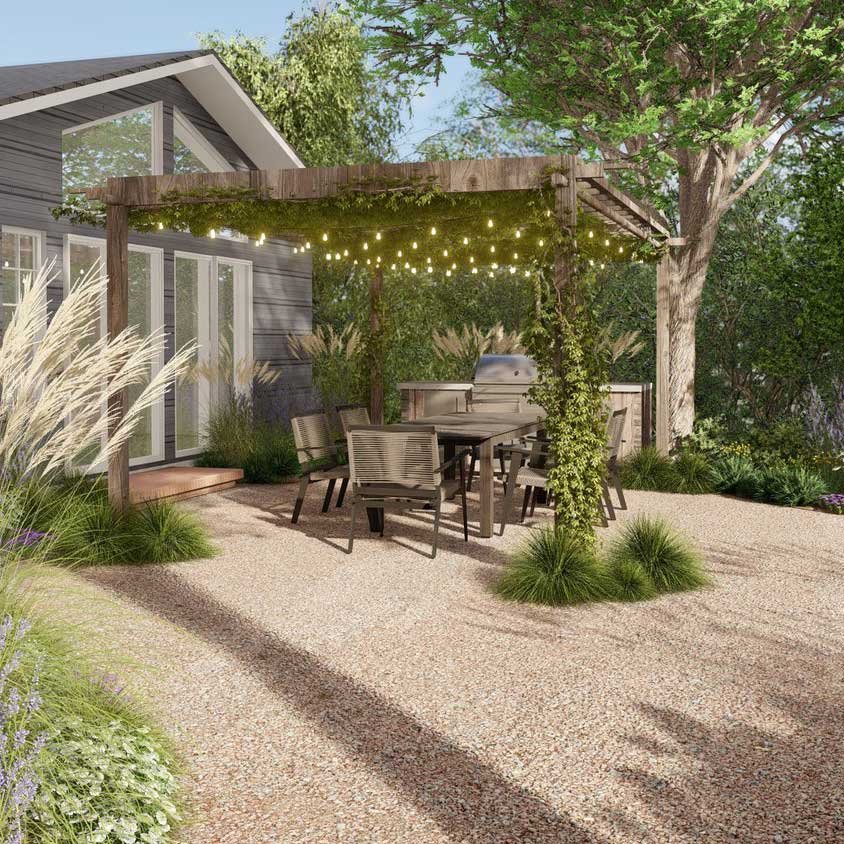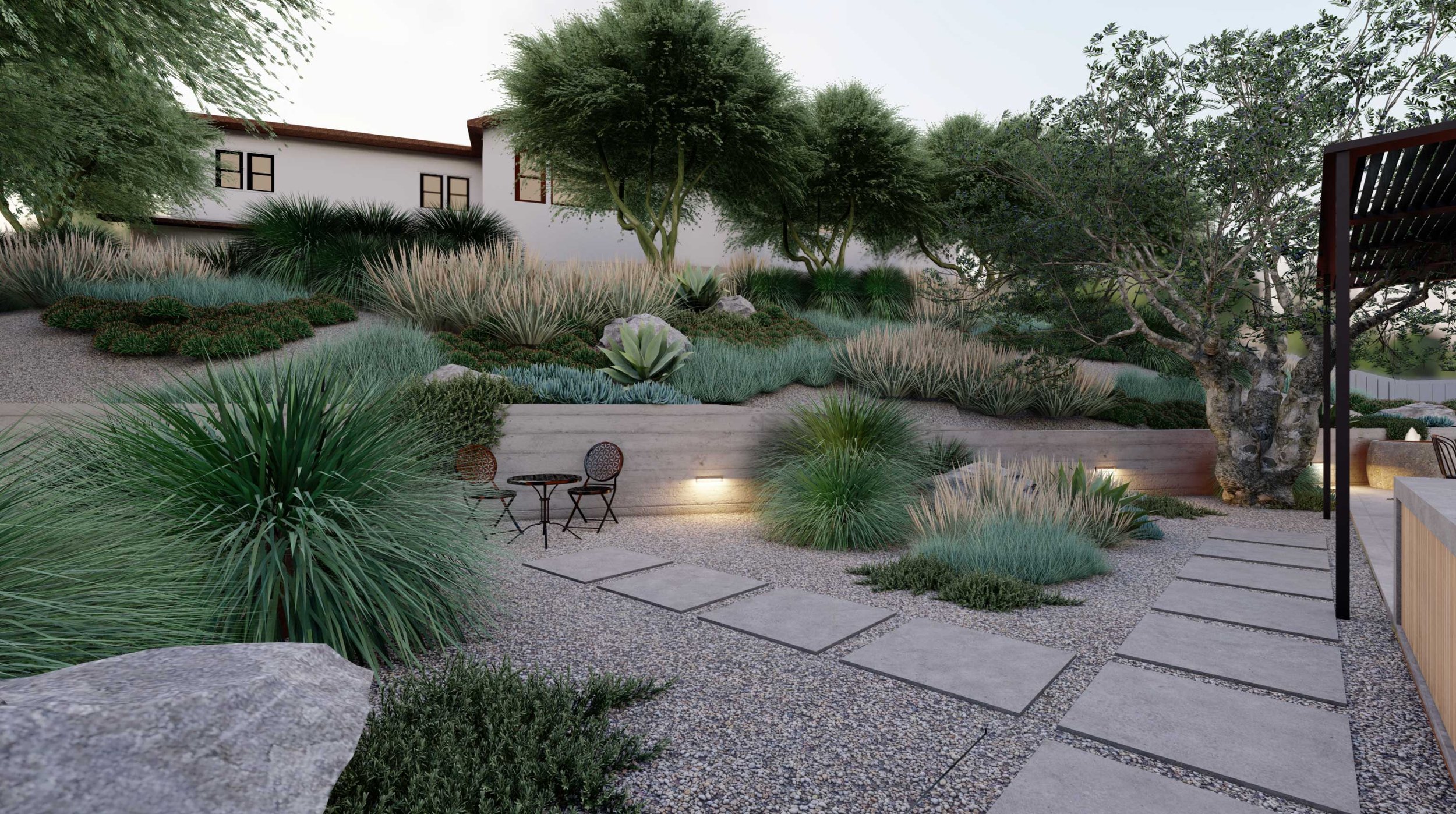Getting My Landscapers To Work
Getting My Landscapers To Work
Blog Article
Some Known Factual Statements About Landscapers
Table of ContentsThe Basic Principles Of Landscapers Landscapers Can Be Fun For Anyone9 Simple Techniques For LandscapersFacts About Landscapers UncoveredLandscapers Things To Know Before You BuyGet This Report on Landscapers
- A garden feature where water is represented by an accumulated rock item, normally a crushed rock or granite.- A rock or natural flagstone patio, path, or pathway built without a concrete base.- A stone preserving or free standing wall developed without using mortar. A very knowledgeable mason is needed for a dry stack rock wall. A lot of wall surfaces in Rose city are moist stacked, also if they seem. - A below ground framework that accumulate water and enables it to slow down percolate right into the soil around it.
Landscape style that is suitable with a sites' setting in both appearance and sustainability without adverse effects to the atmosphere. Edging in the landscape is a line of demarcation that develops aesthetic rate of interest in the yard by separating one segment from an additional section.
Locations can also have a feeling of "enclosure" offered by trees, various other plantings, fences, or screens. The landscape near the access to a building.
5 Simple Techniques For Landscapers
:max_bytes(150000):strip_icc()/look-up-look-down-photography--o7ASOHDV9E-unsplash-62ac6efd6d724c7abb7320fefe03b411.jpg)
The aspect in a landscape design or area in a landscape that is meant to be most popular. The prime focus can be a plant, stone, statuary, gathering space, or various other landscape attribute. A design of yards or garden aspects that worry straight lines, appropriate angles and circles. Bushes or bushes located in beds near the foundation of a home or various other structure.

6 Easy Facts About Landscapers Described
Rock item, either rounded or fractured, that is fairly little- usually 1" or less. Reduced plants that are allowed or encouraged to top an area. Can refer to any type of "tough" yard components including statuary or boulders yet many frequently is utilized to refer to paths, patios, and walls.: Elevation distinction in between the level of water in a fish pond (or the degree of the pump if it sits outside the pond) and the upper electrical outlet of water which influences performance of the water pump in gph (gallons per hour). Dense bushes or trees that create a fence, display, or boundary.
Fencing boards that run horizontally, frequently made use of in modern-day or Japanese-inspired landscape layouts. Proper use of imaginary lines can help the landscape feel linked to the home and other components.
An even more kicked back garden dominated by rounded instead of straight bed lines and a much less rigid structure. Standard PNW landscapes are casual. A plant that spreads out more than preferred, or into habitats where it does damages. Rose city has a list of invasive plants that need to not be installed in landscapes due to the fact that they can spread to woodlands or rivers and be hard to manage.
6 Easy Facts About Landscapers Shown
Can include head positionings and insurance coverage, pipeline sizing, GPM specs, and products needed to install this system. Accredited specialist who creates landscapes, coached in engineering and design as well as in gardening.
Landscape developers normally have less education than Landscape Architects and are not certified. A finished landscape design, detailing all aspects for the new landscape.
Calcium material made use of to increase the pH in soil, which will certainly make it less congenial to moss go (Landscapers). A water limited HDPE product utilized below fish ponds, streams and waterfalls in water features. Using many growings of the very same variety to fill out an area in the landscape. This can decrease maintenance and water usage in the garden.
A mix of concrete, sand, and water that is used in rock masonry for establishing rocks and joints. A layer of compost or bark dust applied at the base of a plant. A mass planting of moss. A plant that was present in a geographical location before individuals began altering the landscape.
Little Known Questions About Landscapers.
How the yard or a garden component is arranged in partnership to an existing or brand-new attribute or to a direction. Keeping a grass without the usage of chemical herbicides, chemicals, or plant foods. Yards that are not mowed however grown in landscapes as perennials. This is a partially open sided leisure or recreation location that adjoins a home, used for entertaining, outside eating and simply appreciating the outdoor environment.

Tiny round gravel. Plants that supply seasonal rate of interest and after that die back in the winter season. Annuals do not return the complying with period, however perennials do. Winter yard that is one of the most common turf grass in Rose city, OR et cetera click here for more info of the PNW.An open roofed framework over a patio or various other landscape feature.
Basalt accumulated ranging in dimension from 1/4" to dust. The most usual landscape crushed rock in the PNW. Location of the landscape designed to take care of water till it can soak into the ground. A chain that manages water as it takes a trip from a roof covering seamless gutter to the ground. Yard structure that creates a growing area that is included and more than the surrounding grade.
Developing a yard feature consisting mostly of rocks with plantings that enhance and can flourish in the rough environment. Lawn sprinkler head design that revolves a stream of water throughout an area.
Not known Facts About Landscapers

Report this page